Ooltewah, Tennessee, United States
Architect: Pete Dye (1983)
7,400 Yards, Par-72
Rating/Slope: 76.8/152
My Quick Review: The Honors marks Dye's transition from minimalist to maximalist and it is one of his very best.


Routing
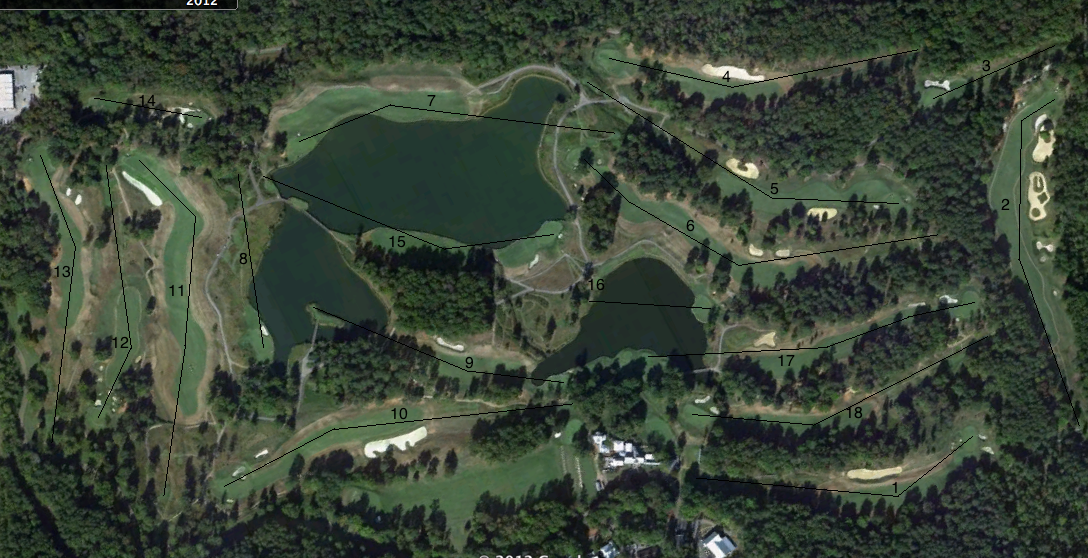
Clubhouse


A few thoughts:
1) I don't know (other than the moving of 10 green) how changed the course is from when it opened, but assuming it is as originally designed, it feels like a course that lies in the heart of Dye's transition from minimalist/naturalist to engineered design. Like The Golf Club, many of the holes feel naturally draped over the land, using the ground's macro contours to add interest to the design. But, unlike The Golf Club, there is a more manufactured feel to the areas (in particular the shape/style of the bunkers) around the greens. The unique/bizarre volcano bunkers I'm sure some have seen at French Lick even make an appearance (behind 6 green).
2) There is a very interesting interplay between the bold features and subtle design. In many cases, Dye places his boldest/most intimidating/most penal features on the Line of Instinct. The golfer's eye is drawn to these features and his mind faced with the difficult task of playing to the Line of Charm, leaving the longer shot over/around the bold feature. In a couple of places, Dye hides the Line of Charm from the golfer's view, further challenging him to use his head and fight his instincts.
3) The contouring around the greens make for some very interesting potential recoveries. The combination of firm fairways/greens and sticky zoysia make for some difficult recoveries. Many of the greens are surrounded by large and contoured run-offs into deep swales and deeper bunkers. Unfortunately, the slowness of zoysia makes finding these features unlikely.
4) I have read some criticisms about the par-5s at The Honors individually and as a set. Respectfully, I disagree. One of the world's great set of par-5s. These par-5s have everything from angles, to blindness, to tiny greens, to fearsome bunkers, to tiny bunkers, to blind bunkers, to snaking fairways, to rolling to terrain, and very importantly, cleverly protected 100-yard markers.
5) I had read about the quality of the short par-4s at The Honors. Honestly, I was disappointed that there wasn't one that played under 300 yards. The mid-length 12th is very well-done, as is the 9th, and the 1st is an exceptional opener.
6) For those interested in ratings, I think that The Honors is a clear step behind The Golf Club, but I would return to it ahead of any other Dye design I have played (including The Ocean Course, Whisting Straits and Teeth of the Dog). I think Golfweek has it about right.
The review of The Honors in the Courses by Country section begins with the 5th hole; maybe this was in the name of brevity, but some seriously good golf is ignored in the first 4 holes. The first hole is a near ideal opener, with a first tee set steps from the small, welcoming golf shop. Interestingly, the tee shot is mostly blind, with the deep (DEEP) bunker down the left ready to catch those with first tee jitters. But, the first fairway is extremely wide, the widest on the course, and begins to narrow 250 yards from the tee.

At The Honors Course, Dye often asks the golfer to pick his poison. Simple strategic design requires that the bold line reward the golfer in terms of both line and distance, but this is rarely the case at The Honors. For example, at the 1st a tee shot on the bold line down the left leaves a shorter approach and a better view of the green, but leaves a more difficult angle of approach to a green that will more readily accept an approach from the right.

The second is a great mid-length par-5 on a course with one of the great set of par-5s I've seen. From the tee the golfer must ignore his instinct to cut-the-corner over a series of bunkers. As seen from 250 yards out, the second shot is confounding. Bold greenside bunkering tempts the golfer to lay-up as near the green as possible, but lay-ups down the right leave a near impossible pitch to this very shallow green.


The 180 yard par-3 3rd is unassuming from the tee. While the land appears to feed shots from the left toward the long and undulating putting surface...
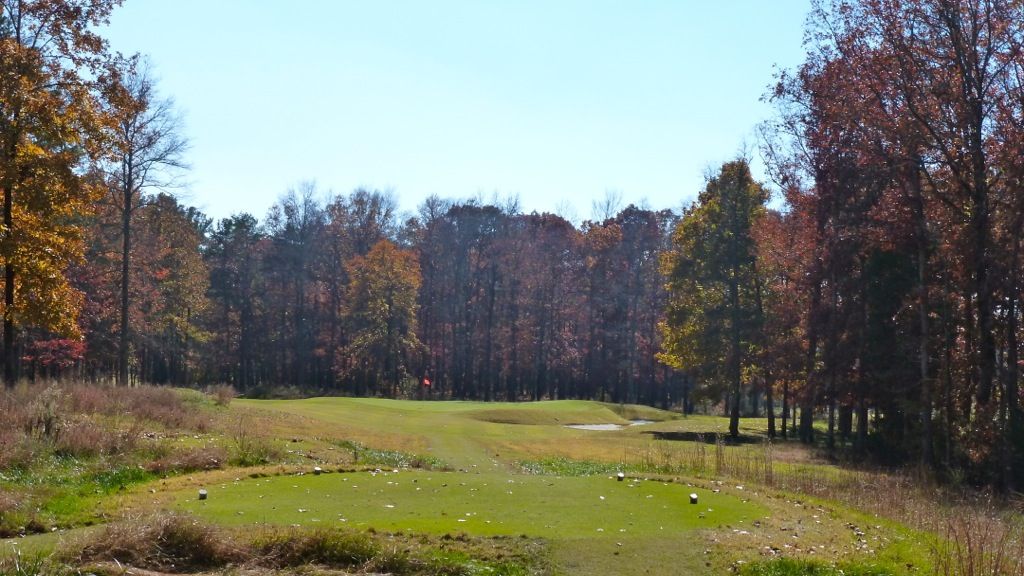
Upon reaching the green one sees that the land tilts severely away from the green into this feeder bunker from which recovery is impossible.



The 5th plays parallel to the previous hole and thanks to an added back tee can play as a monster par-4 near 500 yards. Only the front-left portion of the green can be seen from the fairway. A green side bunker will have many golfers bailing left, but this slope / false-front will reject bailed-out approaches.
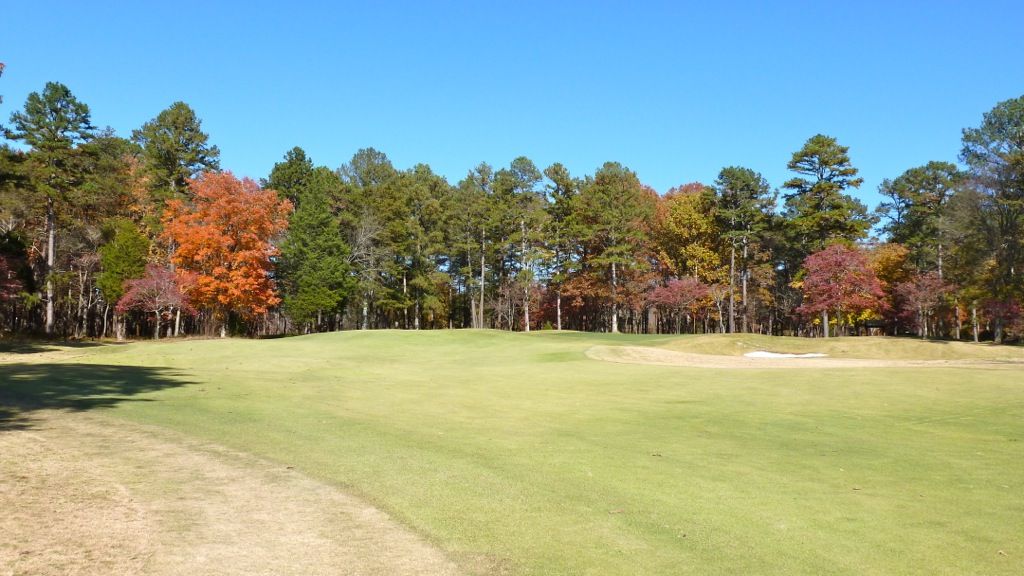
At the 6th Dye tempts the golfer to play over, or even right of, the fairway bunker. But, the line must be chosen carefully as fairway lay past the bunker and rough/fescue will catch any shot played right of it.
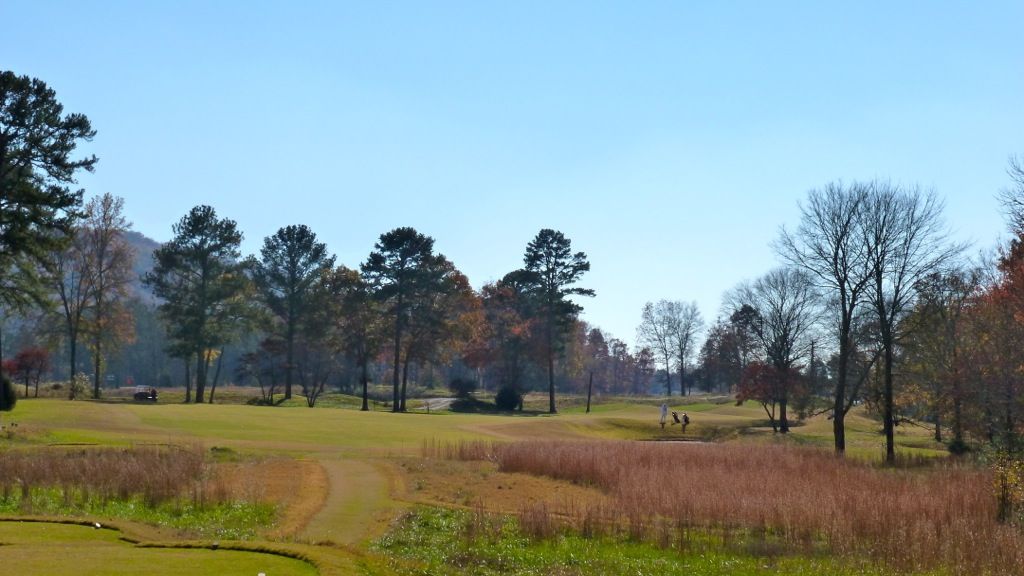
As we will see again at the 11th, Dye chose to use a landform to hide the width of the fairway. Again, the 100 yard marker is well-protected.
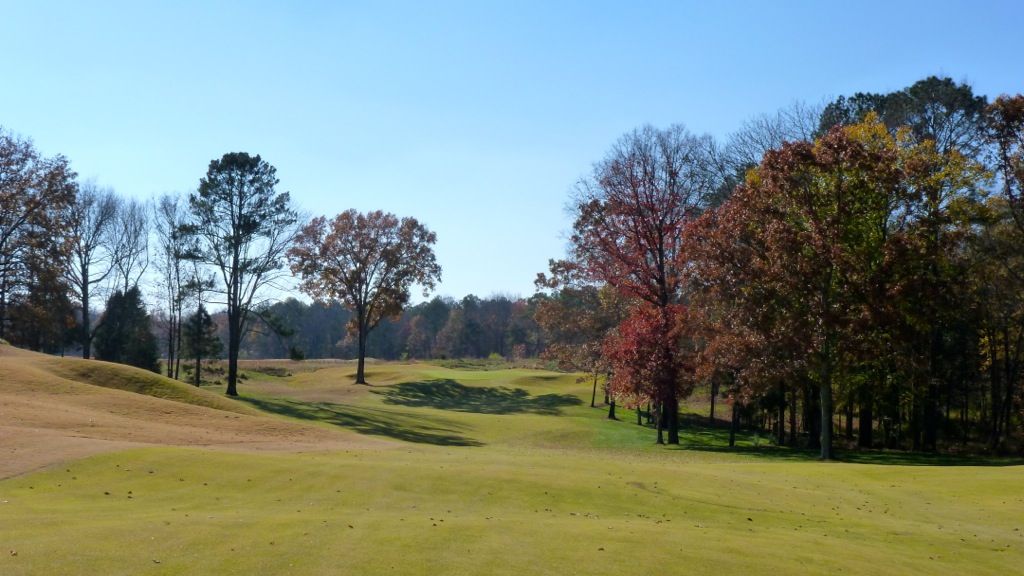
One of many bizarre bunkers on the golf course, this one a miniature of the volcano bunkers at French Lick:
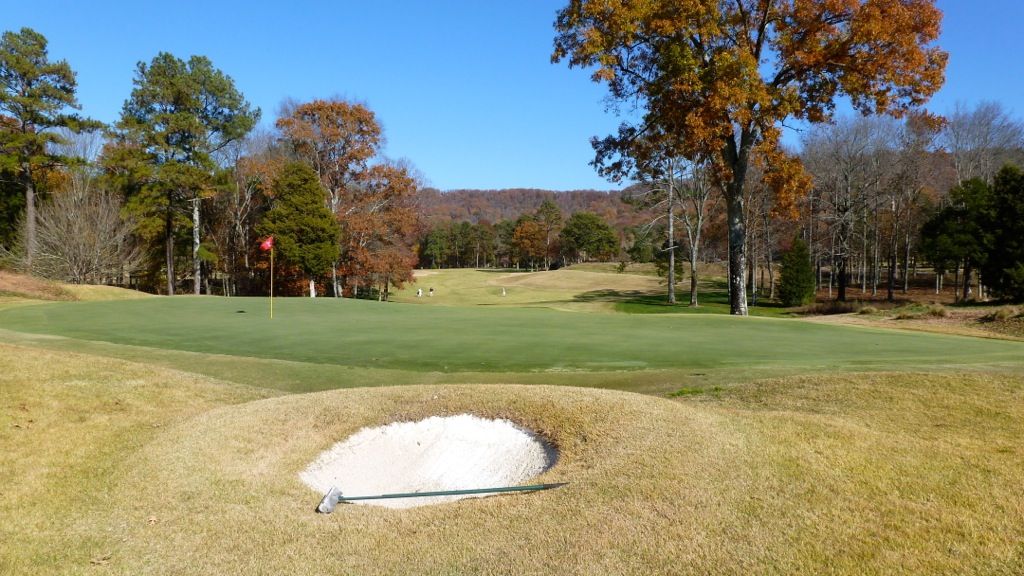

Tee shots played near the water will leave an approach that is all carry over water but is played to the width of the green. Unlike 18 at Sawgrass there is a bailout area in the form of a deep swale to the right of the green, but the term bailout is used loosely.
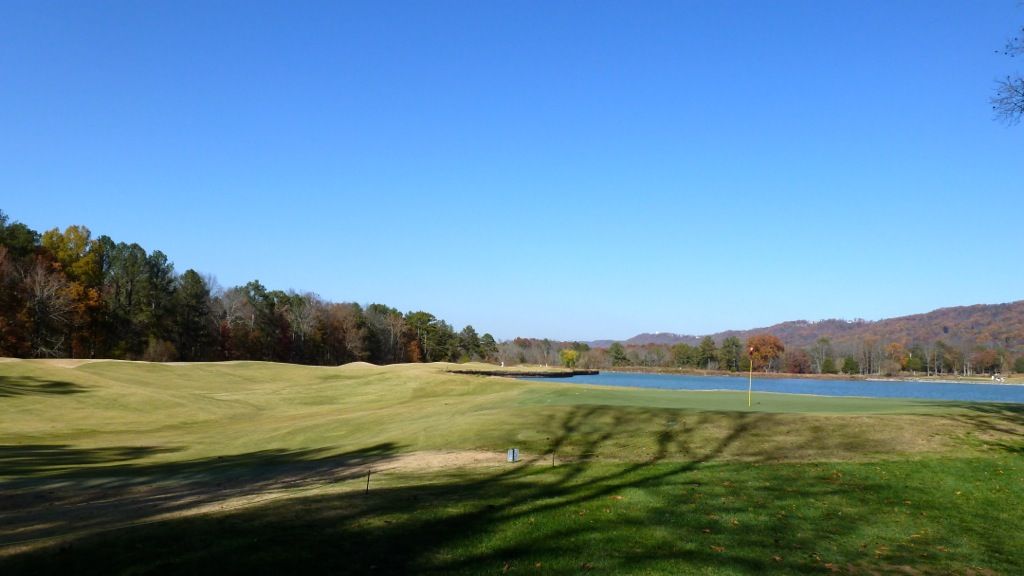
The 8th is often cited as a very strong par-3, perhaps the best on the course, but I see it is as a typical hole with water on the left and a swale on the right.
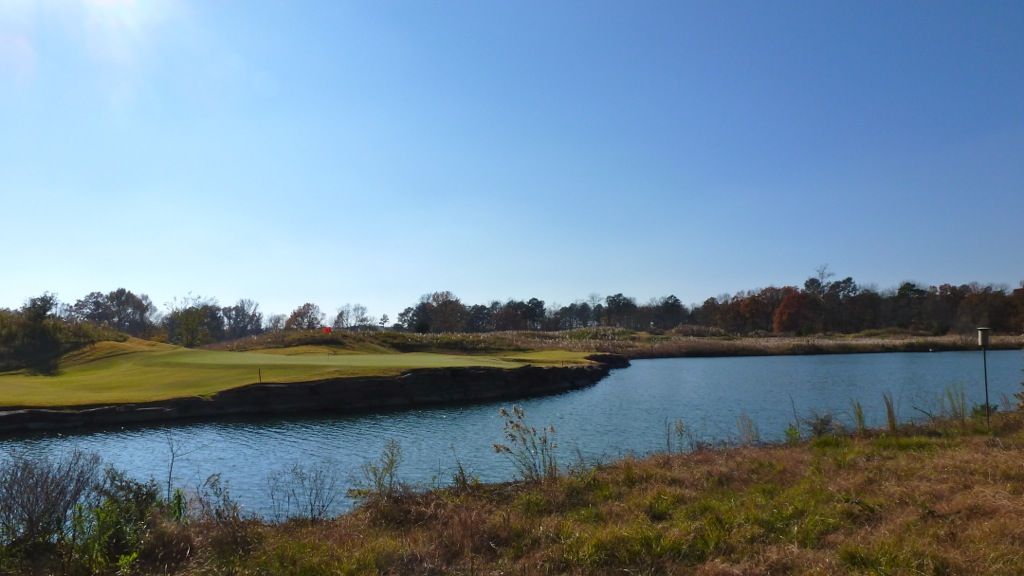
The 9th once again showcases Dye's genius in designing short par-4s. Golfers will want to play as near the fairway bunkers as possible to leave a clear view of the green and approach that is played into the green's tilt.
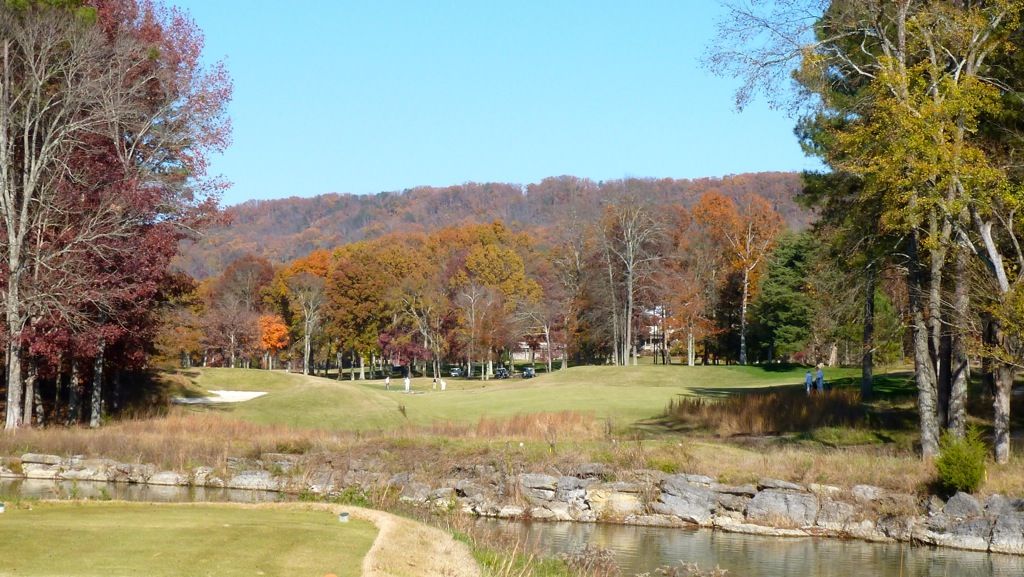
As seen from the left side of the fairway, the green widens as the carry over the water lengthens. Missing right is not an option as a severe right to left tilt means chips from that side may run into the water.
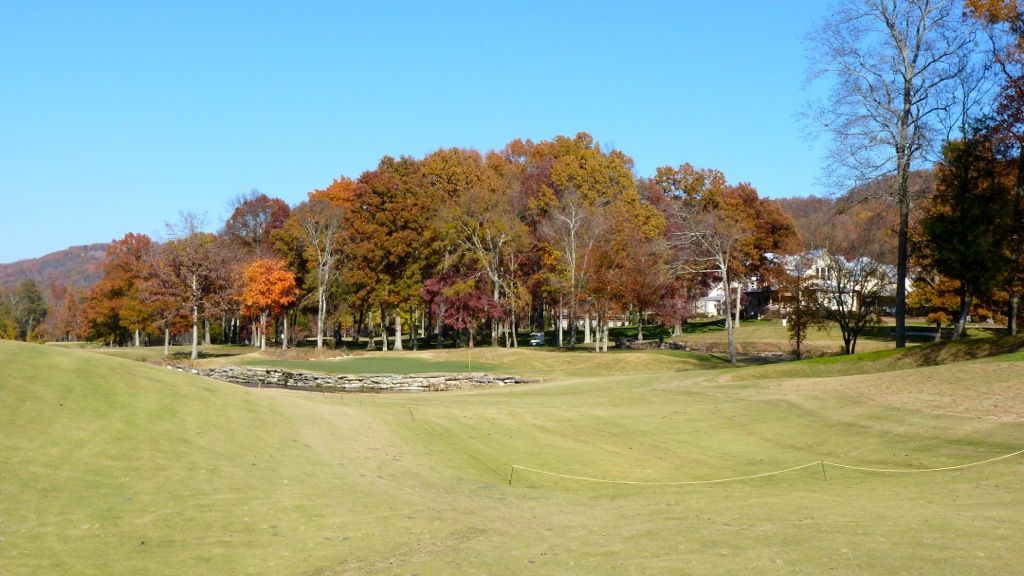
The 10th tee sits steps from the driving range and putting green, and sees quite a bit of action as an opener. From what I understand it is the most changed hole on the course, with the fairway having been shifted some 20 yards to the right and the green (once a great one) blown up and moved some 40 yards back and left. It is something of a curious decision to make the hole more difficult as split-tee starts give a clear advantage to those golfers teeing off on the first.
The 11th is another excellent par-5, played from a high point down to a valley and rising again to the green. The hole is fascinating as it continually tempts the golfer to the wrong line. With the pin in view from the tee, the golfer will want to play farther left than is advisable as only a handful of golfers can carry the hollow on the left.
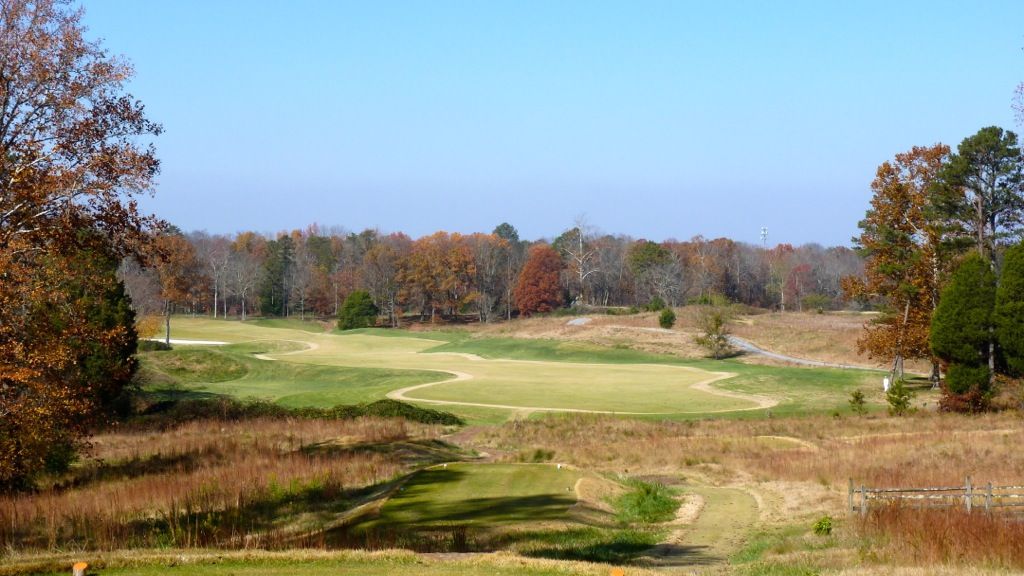
Once in the fairway, most will be laying up. Like at the 7th, the width of the fairway is obscured by a landform. The bold greenside bunkering, like at the 2nd, will have the golfer foolishly laying up to minimize yardage when he should be playing the shot well to the right for the preferred angle.
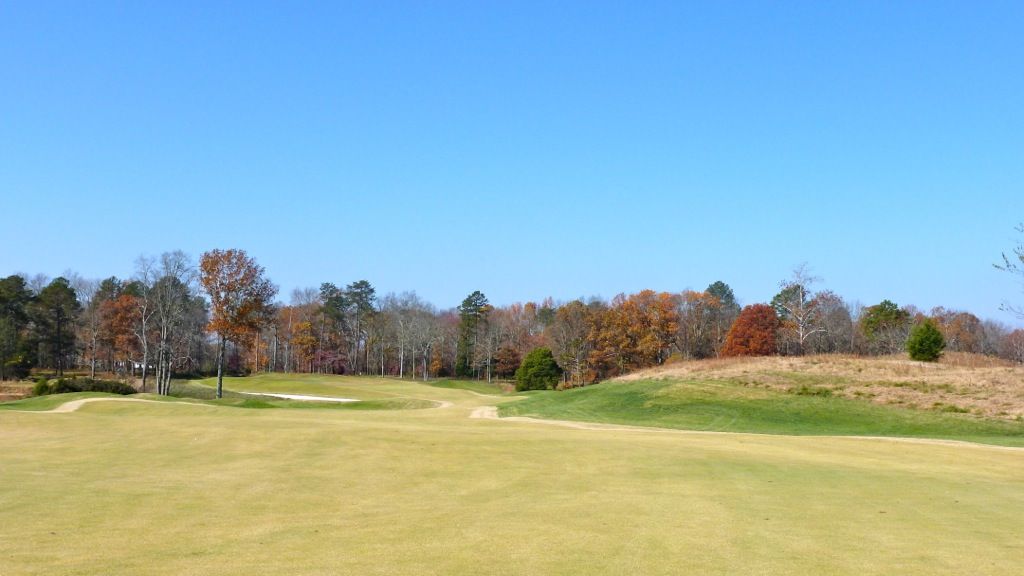
A tiny green whose putting surface is entirely blind from the fairway, the 11th green is protected by fairway cut run-offs to the right and a deep false-front and bunker on the left.
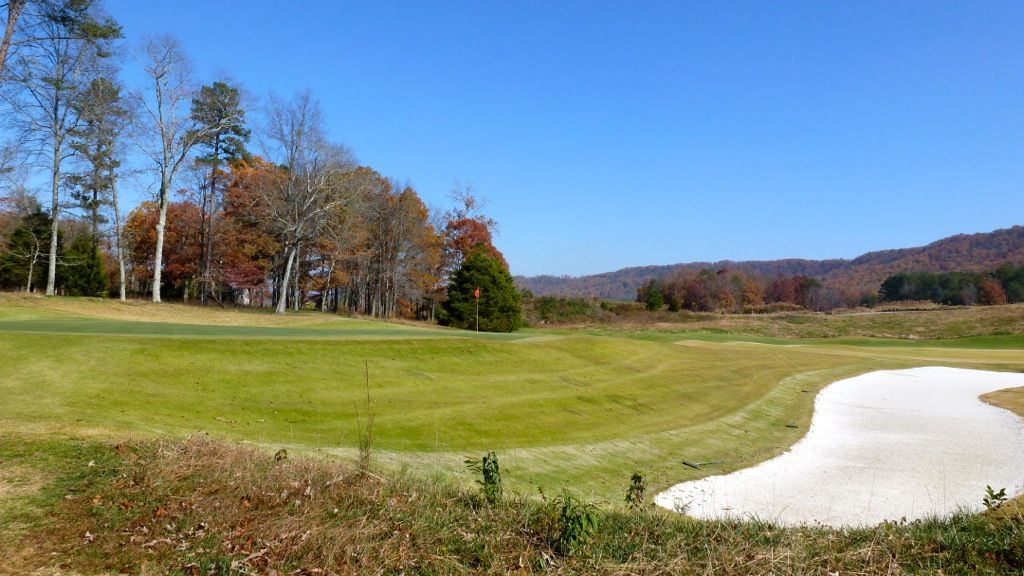
The 12th is a great mid-length par-4 where most golfers will choose to hit less than driver. Once again, the golfer is tempted to play to the right near the fairway bunkering, but a single well-placed tree and a right-tilting fairway mean that the golfer must fight his temptation.
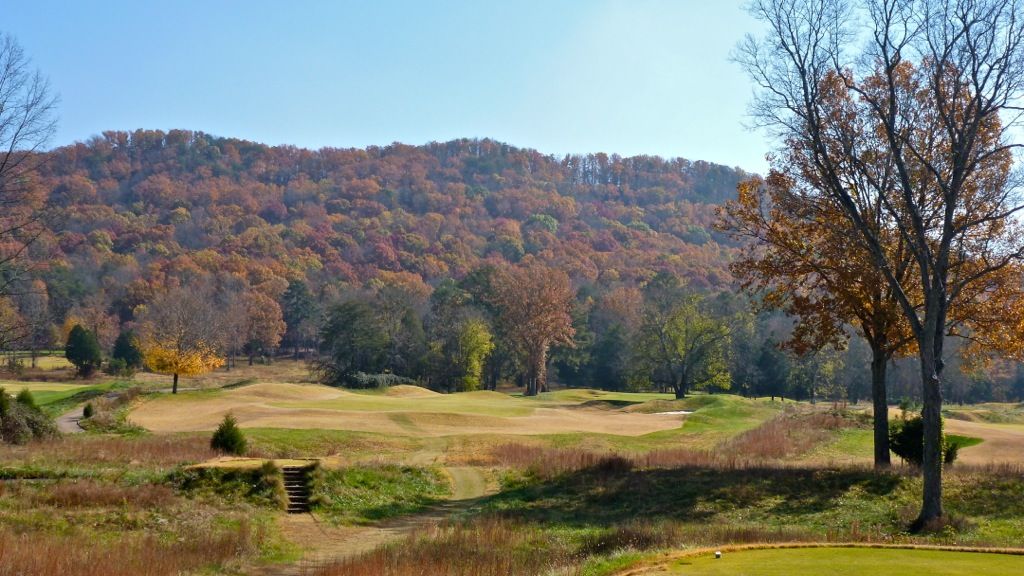
Though the green is guarded by five bunkers, it is the short-right bunker that will catch most golfers' attentions. Those that choose to play away from the bunker and miss long/left will be met with an impossible recovery down the slope of the green.

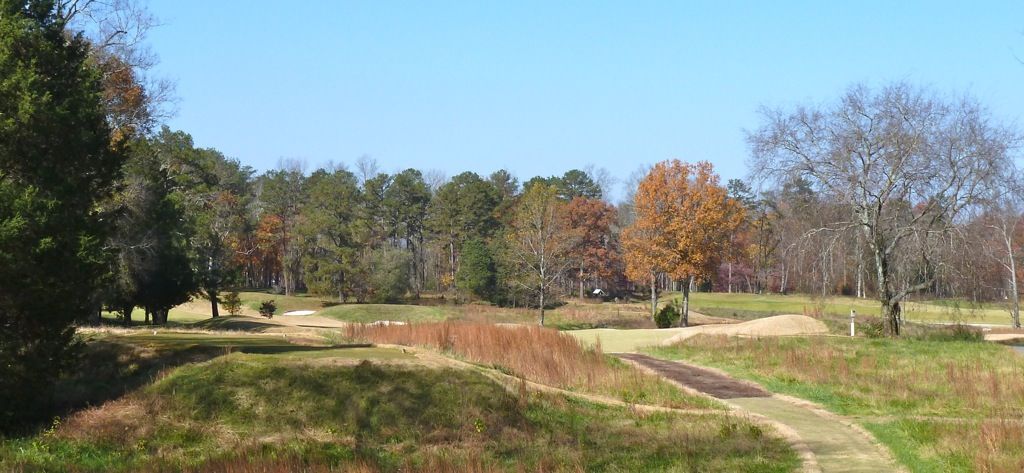
Tee shots that are played up the right-centre and will funnel to the left side of the fairway will leave the ideal angle into the green. The green has the most internal contour on the course and is surrounded by a series of deep cut-outs. My playing partner helps to give a sense of scale...

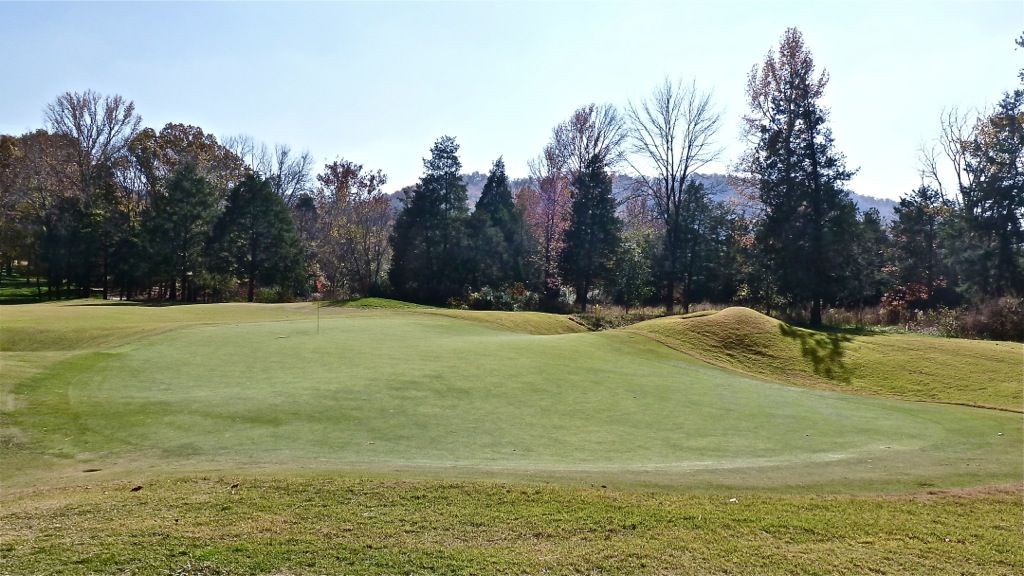
The 14th is a short par-3 and it is a very interesting one. Minimalist or not, it is difficult to see that there is a golf hole to be played amongst the brush...
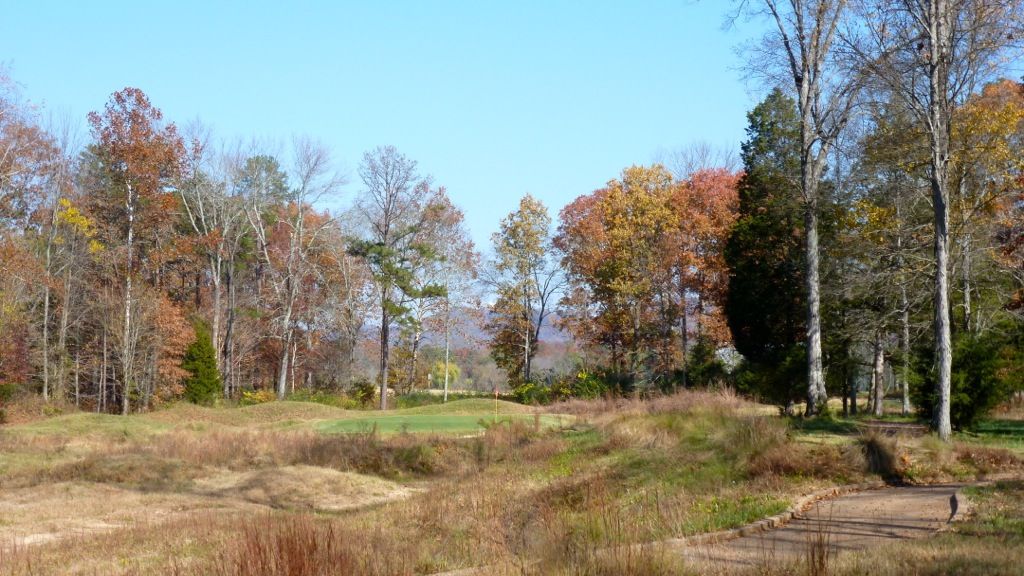
But there is one, a larger than expected green surrounded by a series of bunkers and hollows...
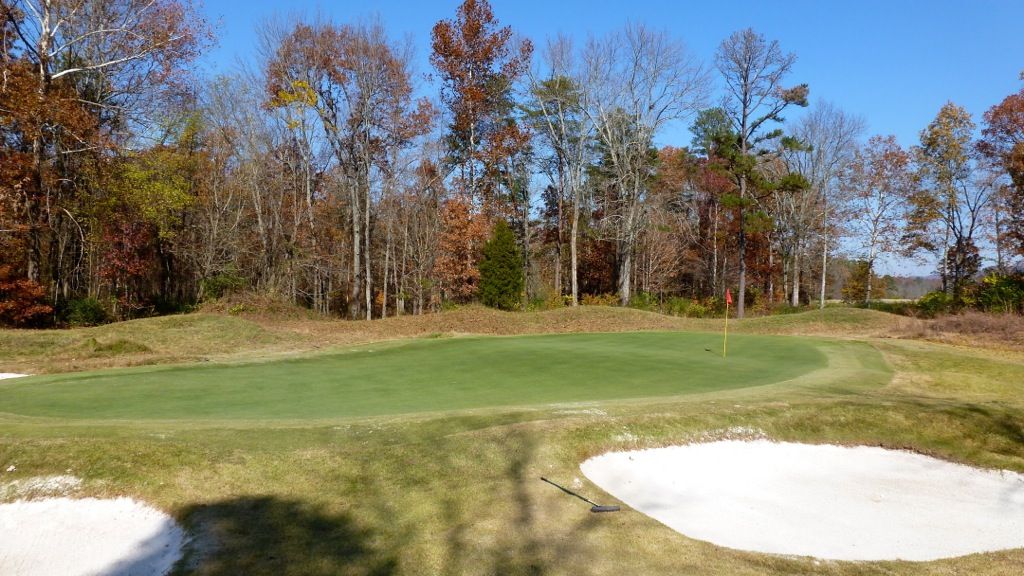
The 15th returns us to the lake and is another hole that can stretch to an impossible length. Curiously, the golfer that challenges the water may have the slightly shorter yardage but will clearly be playing from a more difficult angle.
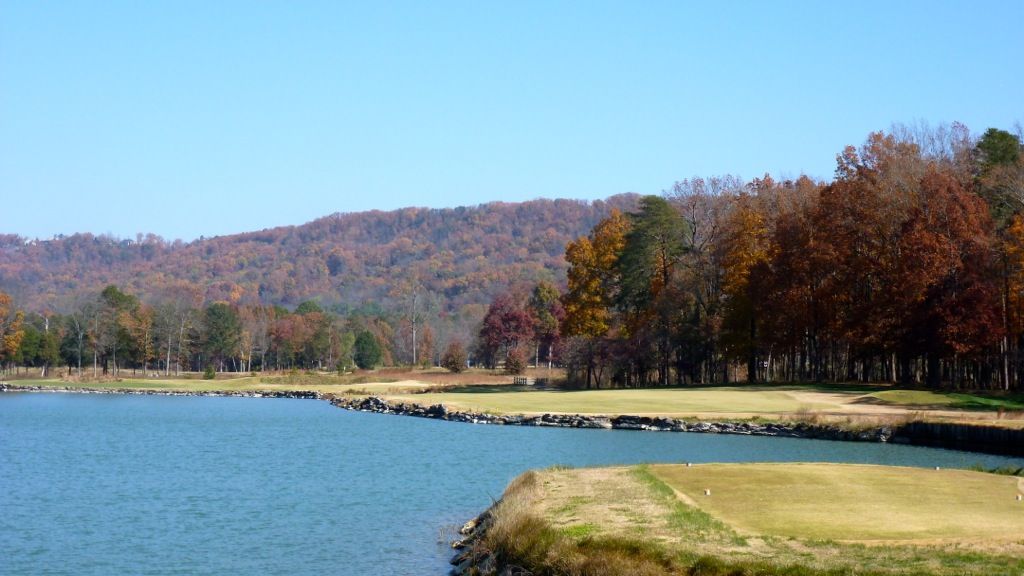
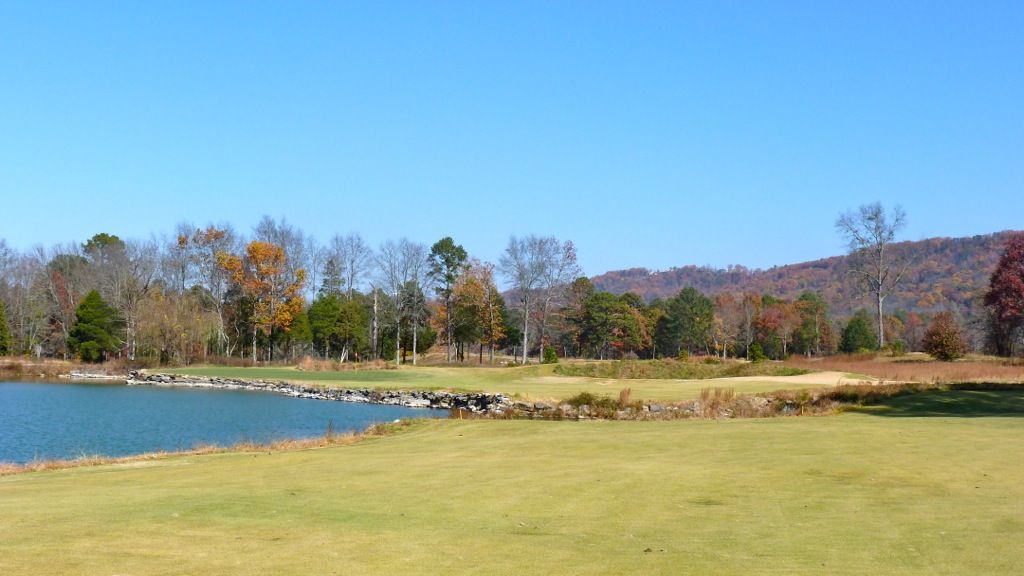
Like at the 9th, the shallow portion of the green requires the shorter water carry. I was told that downwind, right pins are near impossible as balls are likely to bound into this danger over the green...


The long bunkers are set well back from the green and the slowness of the zoysia keeps them mostly out of play.
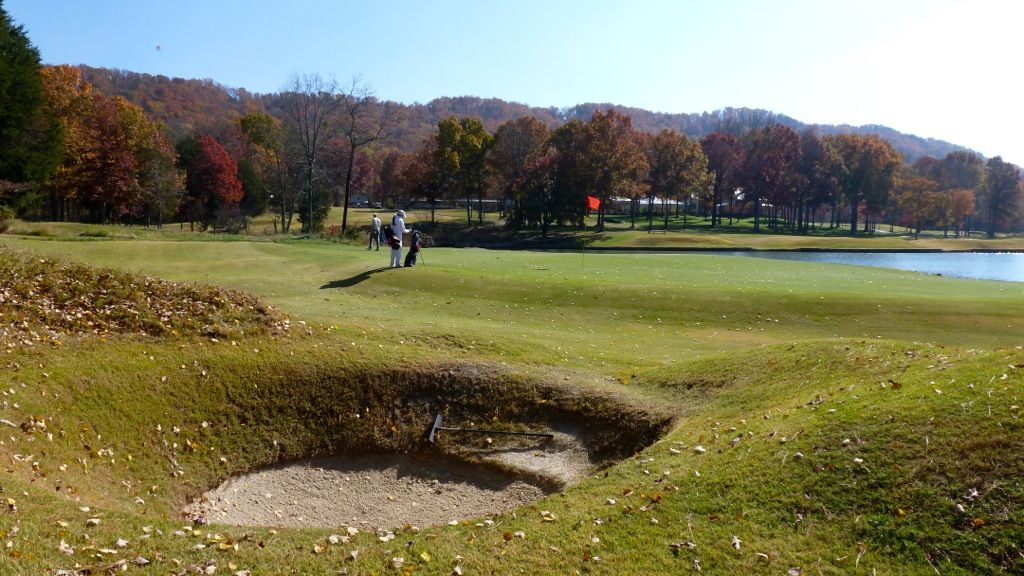
The 17th is another very good par-5, and playing to well under 500 yards it is reachable in two for many. Golfers with the restraint to play the hole as a three-shotter are provided with ample width.
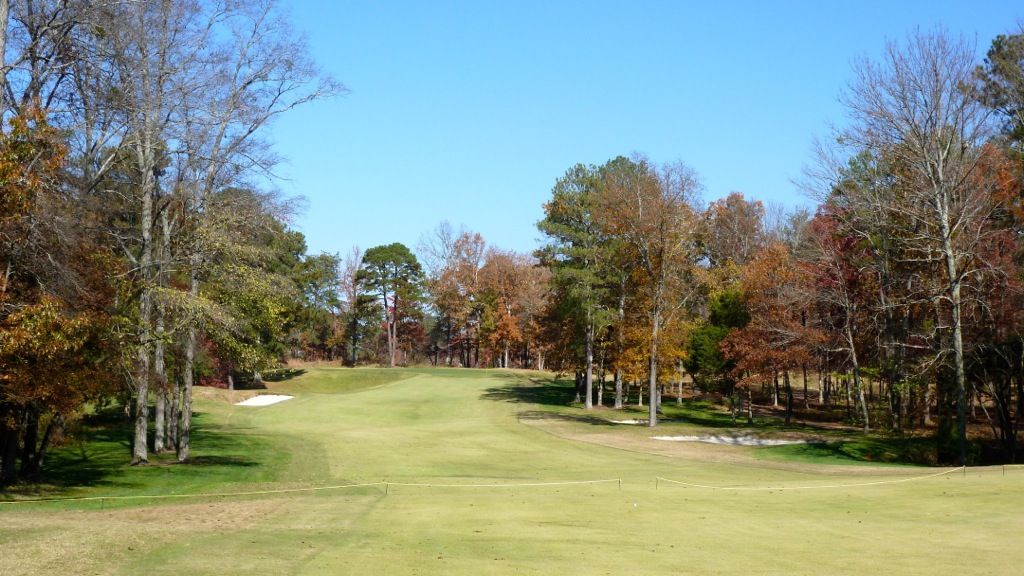
Only a very poorly struck wedge approach would find this cavernous greenside bunker (nicknamed 'Bertha'), but by bringing the green in reach in 2, more golfers will find this bunker than if the hole were longer.
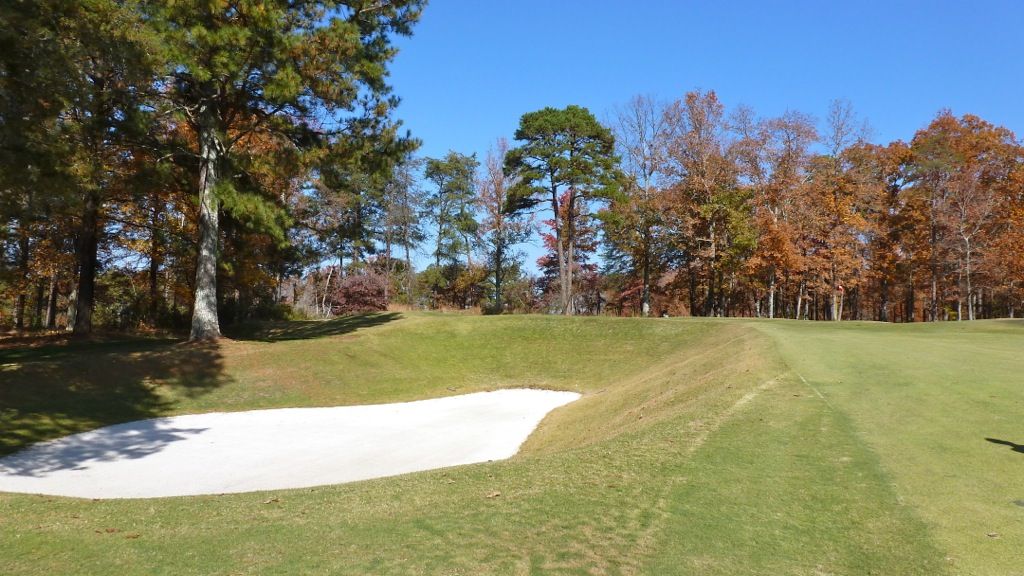
The 18th tee is set steps from an old cemetery. The carry to reach the built-up fairway is imposing visually, but is only some 175 yards.
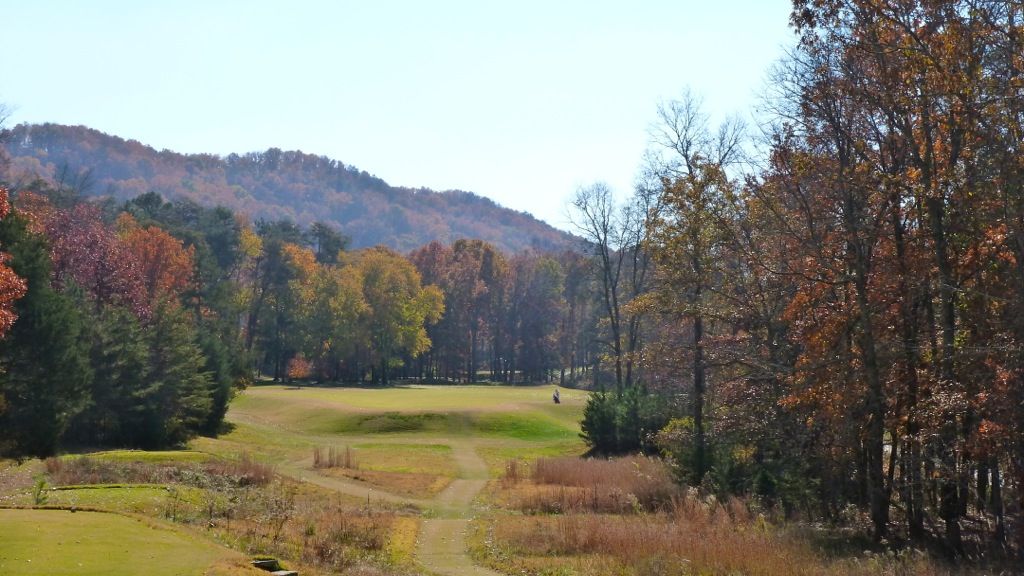
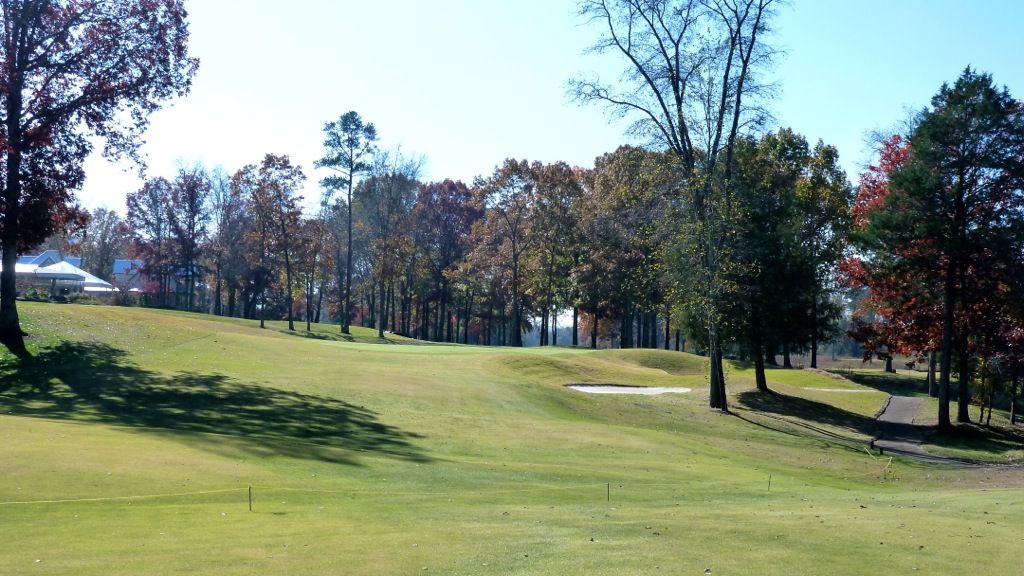

No comments:
Post a Comment